Violence, neon, and retro-wave: What demon is inside of Nicholas Winding Refn pt. 1
The name Nicholas Winding Refn is one of the most recognizable names in the industry of moviemaking. Making rather simple stories he has made himself as one of the masters of visual storytelling.


The name Nicholas Winding Refn is one of the most recognizable names in the industry of moviemaking. Making rather simple stories he has made himself one of the masters of visual storytelling. Light and color, carefully exposed shots, immersive music - these are the tools in the hands of Refn. Otherwise, these are just bitter words, behind which it is difficult to imagine why the director is that respected in the industry.
Therefore, I feel it is my duty to dig into the work of Nicholas Winding Refn, analyze it carefully and depict its' influence on cinematography.
Early Period: Denmark
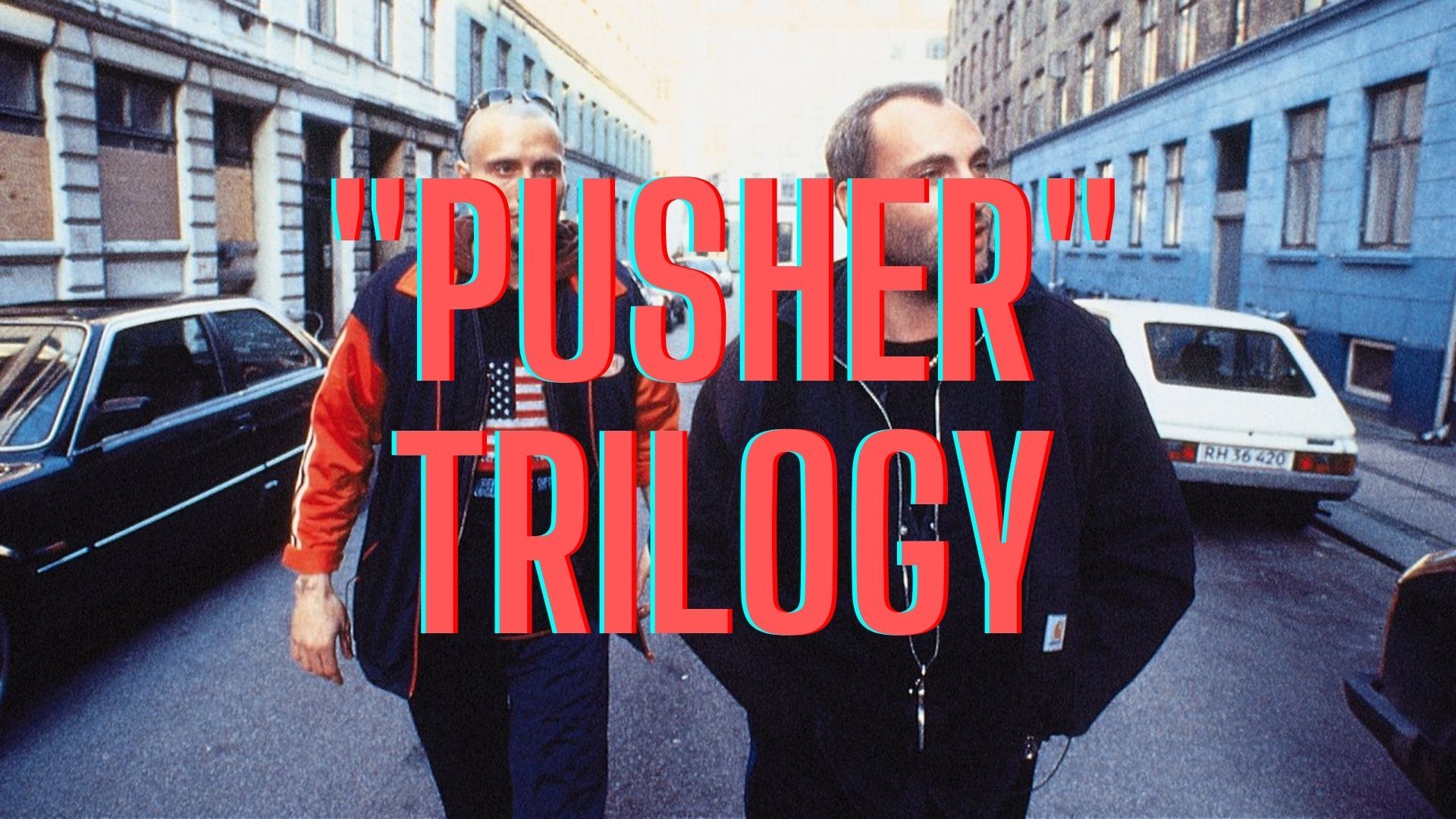
In 1996, Refn began his career in big cinema and immediately shot a picture that could become a Scandinavian answer to the "Taxi Driver"by Martin Scorsese. The synopsis is simple: Frank is a small drug dealer is at the center of a deal when the police attacked, so he had to throw away the drugs. Now he needs to repay the debt to the local boss otherwise he will pay in blood. Frank buys a gun and spins a chain of violence. Sounds familiar - just another criminal story. However, this is the first and not the last time that Refn relies on simple constructions in his work.
"Cinema verite", "Dogme 95" and "Pusher"
Nicholas Winding Refn, like many well-known masters, drew inspiration from the classics of cinema. Particularly, his "Pusher" in many ways is comparable with "The Killing of a Chinese Bookie" by John Cassavetes.
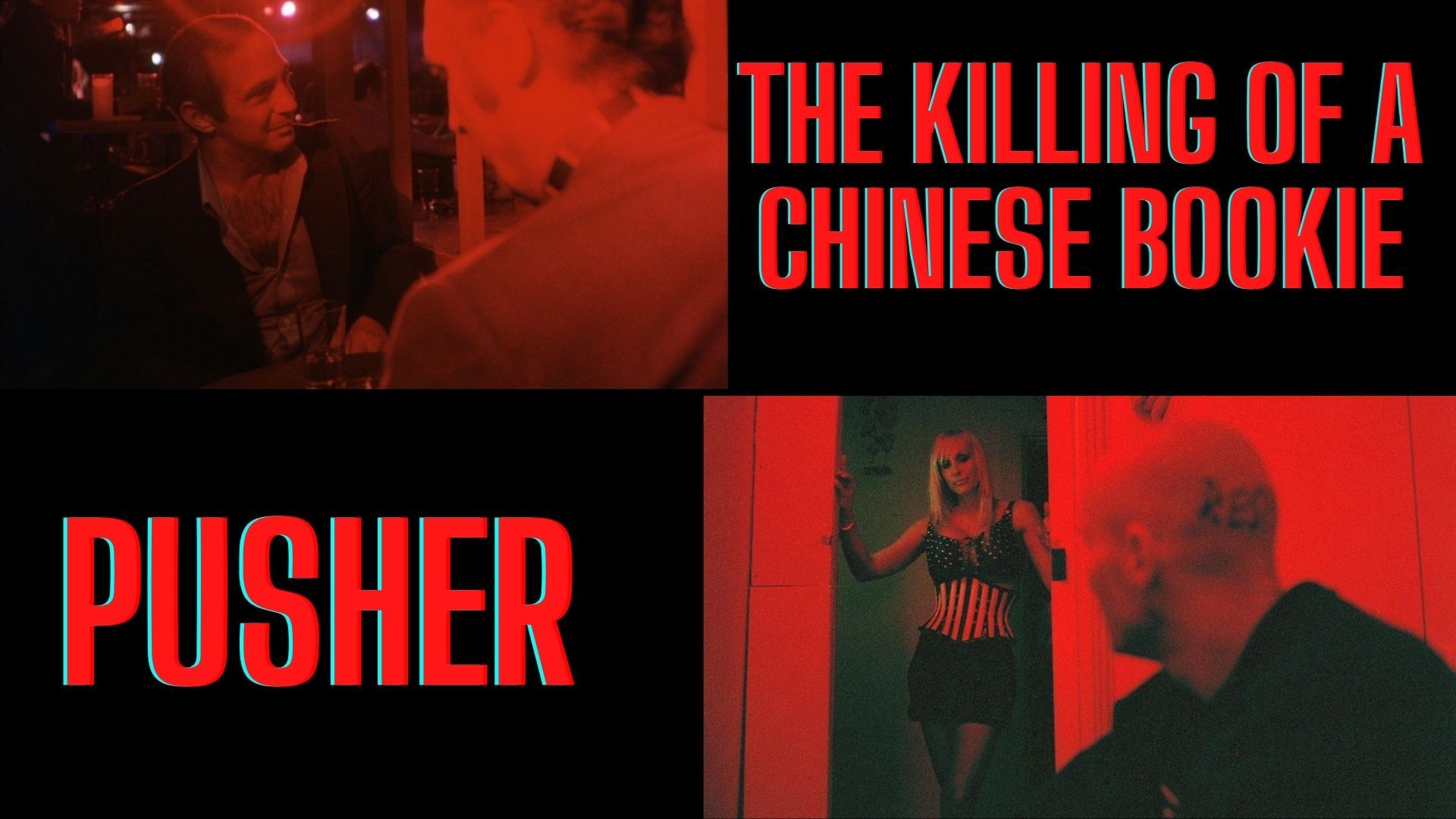
John Cassavetes and Nicholas Winding Refn use handheld camera a lot. And this is not an attempt to pay tribute to the freedom of the French new wave, on the contrary, their shots is designed to capture a tight, difficult reality. The ultimate way to make viewer 100% into the film is to use a harsh handheld camera, which was combined in the "Pusher" with one-shot sequences. Refn's method is to make viewers look at the criminals every day life through the perspective of a very nervous camera. And this particular example of handheld usage might seem unprofessional but the truth is the director gives to the cinematographer of the "Pusher" Morten Søborg freedom to operate with the camera. This reduces production time and also makes it comparable to improvisation. So the shaky, documentary and spontaneous style makes it this immersive that you'd believe to the story. The film literally tries to put an equal sign between the viewer and the protagonist, by making viewers a part of the story.
But not everything is limited to the spectator experience: Morten Søborg himself admitted that he set himself the task of capturing as much space as possible, turning the city into a character equal to Frank. And well, he succeeded. Wide-angled lenses not only captured more details about the environment but also created the sence of crossing personal borders of characters during close-ups. That's why Nicholas Winding Refn and Morten Søborg use the idea of "cinema verite", which direct reference is a documentary movie-making, namely the main task was to shoot a movie capturing the moment as realistically as possible. "Cinema verite" defined a new method in cinematography where form stays above the content. You might think then that its just about aesthetics which means no sense. Yes and no. If you remember around the same time, Lars von Trier and Thomas Wintenberg created Dogma 95, which maximized the concept of "cinema verite" and made movies as a tool of socio-psychological analysis.
Refn collects a constructor from cultural phenomena and genre clichés to build his own directors style. And returning to the question of aesthetics, Refn himself does not speak about the meaning - the "Pusher" is filmed about emotions, and more specifically, about violence.
Even then, in 1996, Nicholas Winding Refn was accused of promoting violence, but the only thing Refn does is poeticize and research the emotion of violence. He is not interested in showing crime itself, that is why we never got shown the result of crime directly: camera is always behind someones back. The main thing is the source of the crime, i.e the characters. Perhaps this is the most important aspect of his method, which he will carry through the entire filmography.
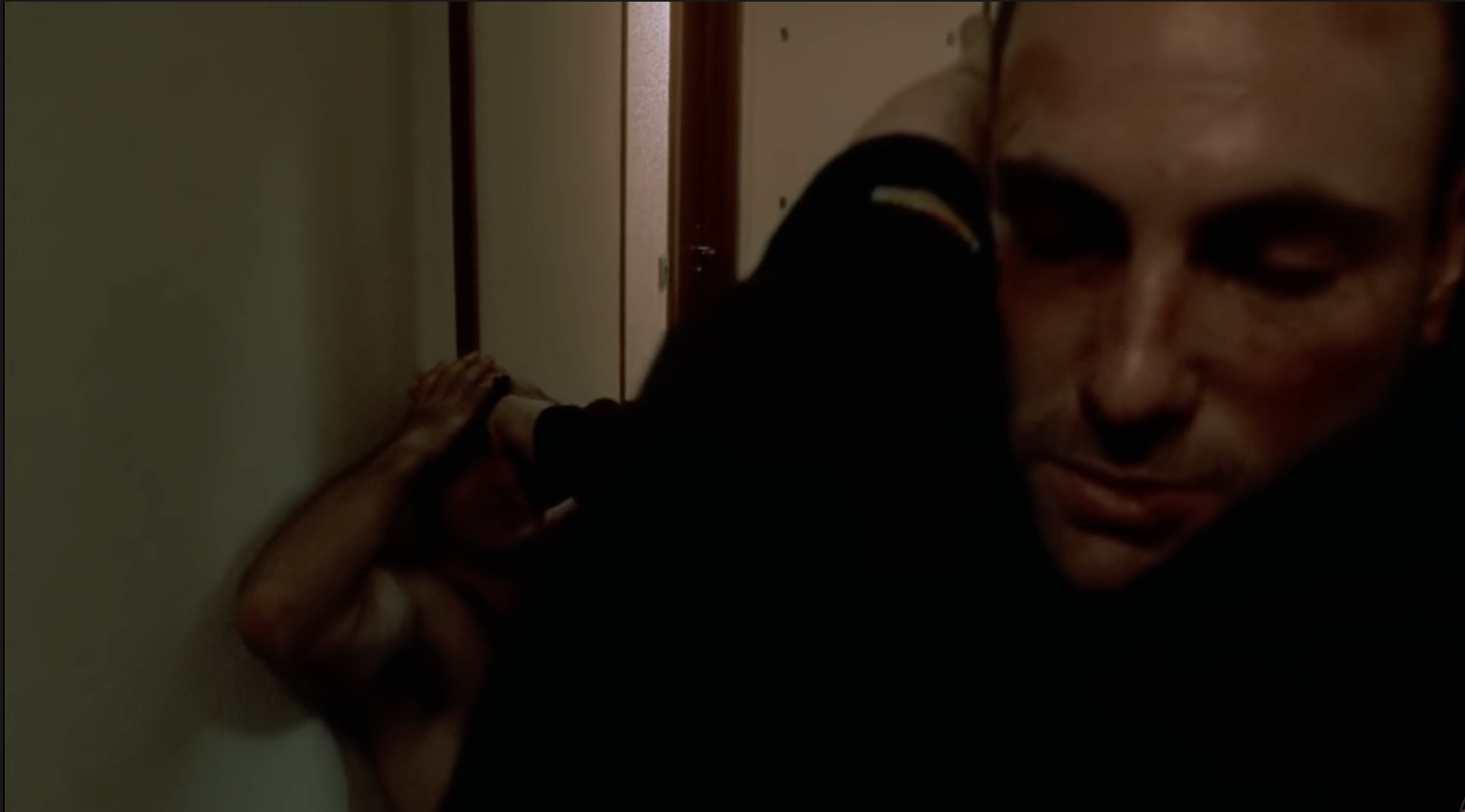
The composition of this shot is as follows: Frank turns away from the act of violence and occupies most of the frame with his face. This close-up moment proves that the main interest for Refn is the charactars who make violence.
The protagonists path in the "Pusher" is expressed in how he barely crosses the line of madness. A lot of spontaneous violence cannot be perceived as anything other than emotional release. Through violence Frank (name of the protagonist) is purified and developed as a person. This statement of mine can be challenged due to differences in interpretation, but it is difficult to argue that, along with the shocking effect of violence in the eyes of the hero, one can see pleasure, relaxation. And here is the thing: to get away from the constraining, unbearable reality, the characters of Refn bring the rules of this reality (which are all about spilling blood on streets) to the point of absurdity. From that point of view Refn has definitely made a new version of "Taxi Driver". The protagonist of the "Pusher" commits all-violence not because it is his voice of protest against the rotten society - on the contrary, in Denmark there is a high standard of living and the criminals themselves live a comfortable life. And this is how Refn reconsidered genre: now the reason is not in the conditions of surrounding, but within the characters themselves.
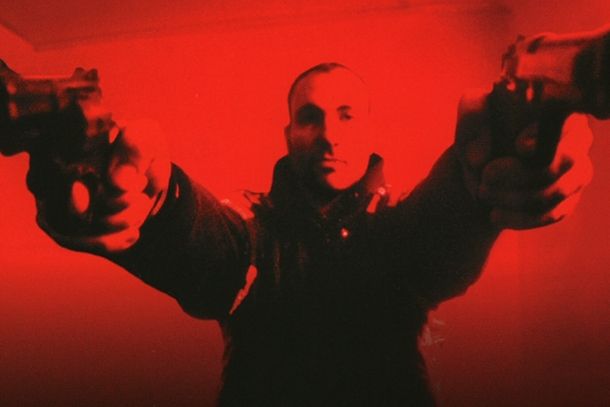
Speaking about the depiction of violence Nicholas Winding Refn has turned to the "Dogme 95". Visual form of the movie in many ways stays above the inner narrative. The influence of this manifesto becomes especially noticeable when we recognize that Anne Østerud (the editor) and Morten Søborg (the cinematographer) also worked on "Dogme 95" films. Already mentioned handheld camera, harsh montage, constant change of locations and contrasty image which is made of blood red lightning in the clubs and the painful color of everyday life. So every aspect of the film depicts obsession and strog emotional level.
With all being said Nichlas Winding Refn continued to use those principles on the whole "Pusher" trilogy.
Refn's obsession with characters
If you research into directors biography you'd definitely reveal some pharallels with the narratives of his movies. I know I've talked about the domination of visuals but that's only because cinematography of "Pusher" trilogy is so dramatic and meaningful (and Refn will prove that he doesn't need a script to tell the stories). Through the characters Refn rises questions that personaly concern him, namely those questions are about self-confirmation and self-identification. They saying early films of Refn it's his autobiography.
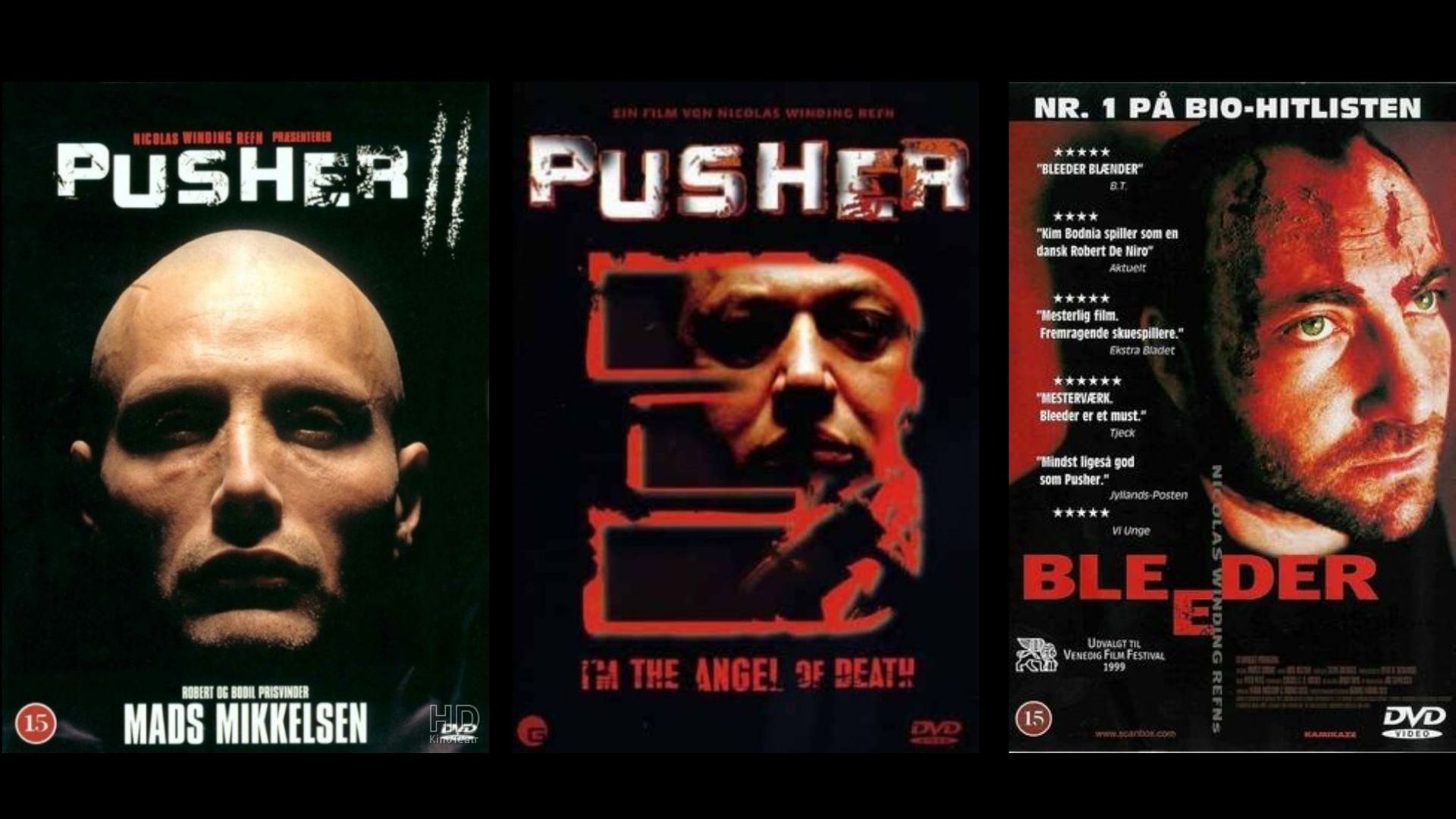
1st "Pusher" is about the desire of Refn to challenge moral norms. The question is: "What if..?"
Right before the second part of "Pusher" he makes the "Bleeder" in 1999, which is about the ordinary office worker who goes crazy because of daily routine (metaphor on the complexity of family life in reality). Such motive have affected on the next film in the trilogy.
2nd part is all dedicated to the fear of adult life (during this period the first child was born). It is a voice of person who doesn't want to drown in routine. But in the end the hero makes himself to a new life and saves the child.
And the 3rd "Pusher" depicts mid-age crysis, where protagonist tryes not to lose the work of his life.
I know a lot hasn't been said yet. I did not stop on each of the films in the trilogy and I haven't talked much about the "Bleeder" and the "Fear X", but the purpose of this part of the article was to interest and motivate you to watch Nicholas Winding Refns early films. And I hope you don't stop there because he is not stuck with shaky camerawork and jump-cuts...
On one of the Denmark TV shows called "den 11. time" Refn defined his approach to the movie-making. He claimed that he when working with the crew would rather give a lot of responsibility onto the shoulders of the actors, he direct but doesn't show and teach how to play. To my mind that is the key of understanding of why Refns films are so unsimular to each other.
"Vilhilla Rising": Minimalism & Grotesque
Okay, this one is complicated. You know I'm not there to teach you to understand the cinema, but I'm literaly comfused about the "Valhalla Rising". This work is a clear example of the fact that Nicholas Winding Refn is not afraid to experiment, to change the narrative of his stories. Of course, in this case the movie "Bronson" is also interesting but we will talk about "Bronson" next time.
The theme of this particular movie is so comprehensive and complex that I can't be sure in saying anything. This is the only reason I won't be talking the initial meaning - it would rather be my viewer experience.
Despite the difficult relationship with the film (tried to watch it 2 times) I do consider this creation as one of the best in the Refns carrier. Firstly, visually. I can't rid of the feeling that the "Valhalla Rising" was shot just like I would like to produce my own movie. On the contrast to the previos films this is very minimalistic. It is so much aesthetically pleasing that you can take a screenshot and make a poster.




Mise-en-scène are carefully directed and color graded so you feel the volume of each shot. In this way Nicholas Winding Refn was inspired by such a direction in painting as baroque. Who knows probably the visuals of "Valhalla Rising" is influenced by Zack Snyder (baroque lover) with his "300". And despite the fact that the Refn uses a handheld camera, and wide angled-lenses the image still remains minimalistic precisely due to the very contrasting color grade and the silent hero. Instead of dialogues, we hear the intersound of mountains and plains, and this is incredibly immersive. Very beautiful.
From the very begining we expect ve stylish and grotesque peace of art. Even the titles makes us think about it.
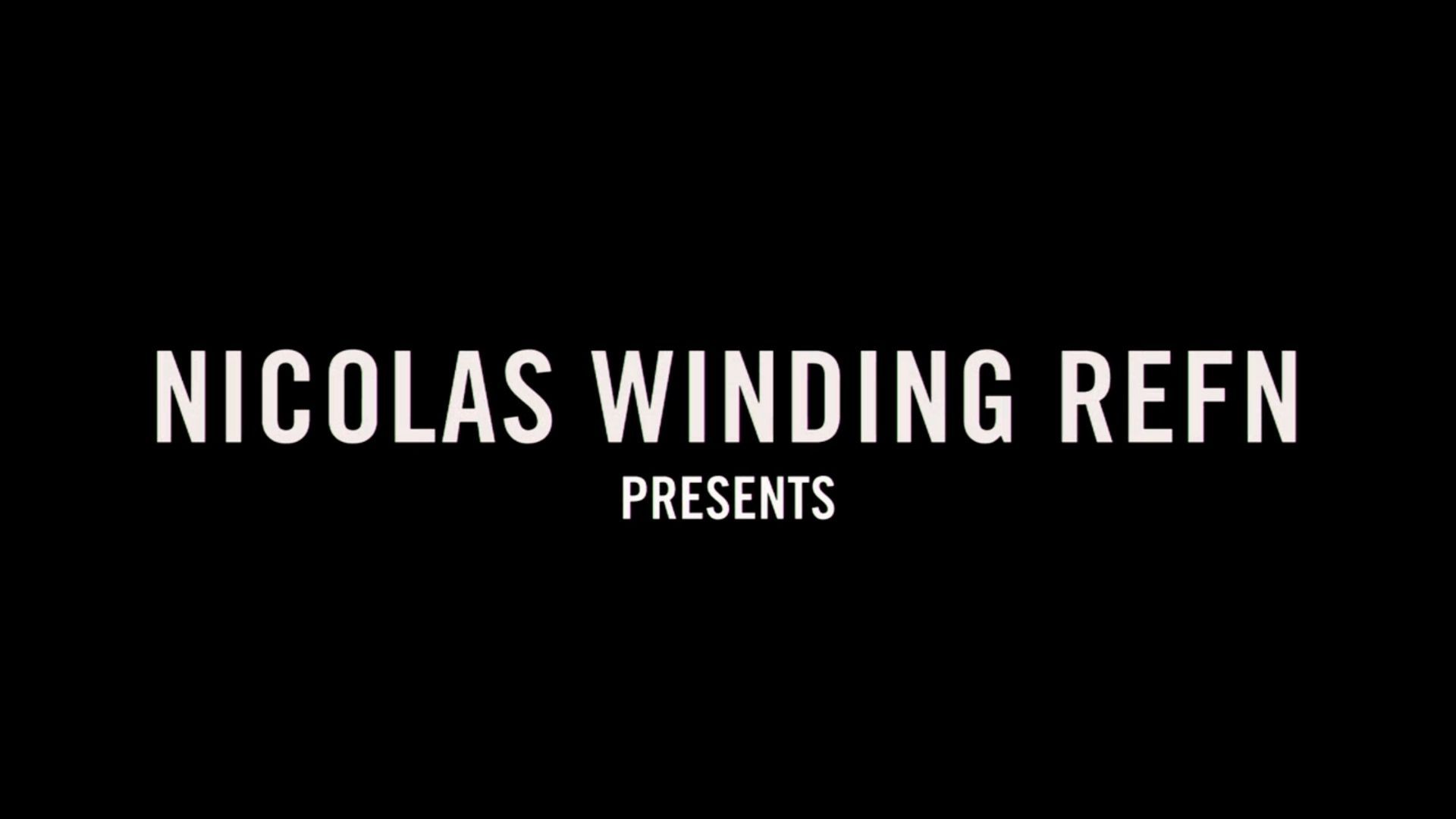


This is the film with characters without any background, names or voice (in the case of protagonist), they also don't seem to have a motivation, they just travel. We do not know where the protagonist is going, but we are following his journey. He is also followed by side characters and they also do not know, but they are still following him like a messiah. And this is the main mystery of the film.
There could be a lot of speculation about the meaning of "Valhalla Rising" but the truth is that Refn again has put the violence into the centre of his story: it characterises the protagonist, it develops the plot, it makes the movie look brutal. And the mastery of Refn is in how he comments upon the topic of religion and believes primarily using violence.
We are on the midway

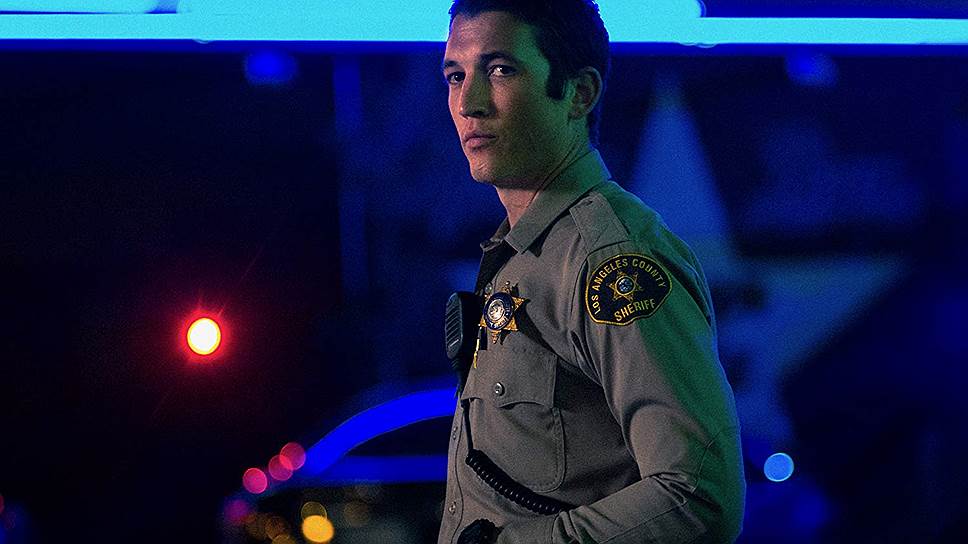
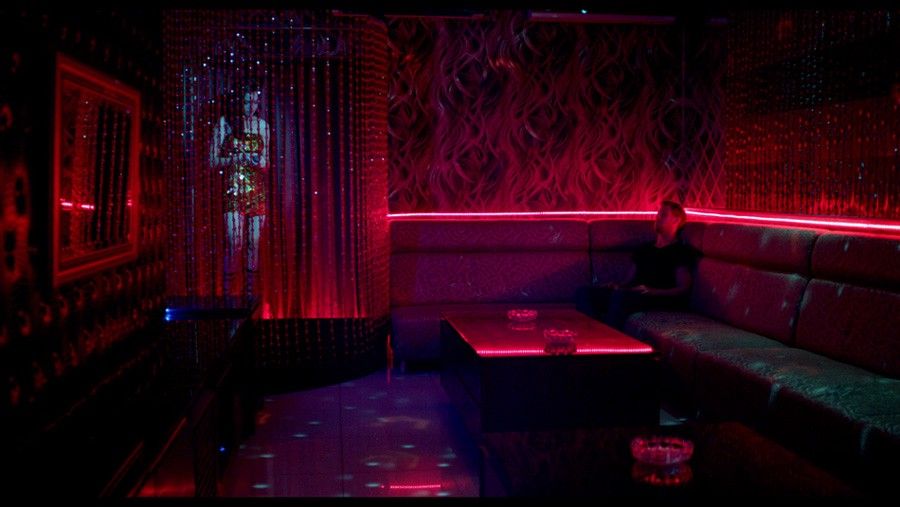


We have reviewed the main works of the Danish period, however Refn has yet to create his iconic movies and receive his award for directing in Cannes. In the second part, we will touch on how his work evolved with the debut in the Hollywood and why his name has greatly influenced pop culture. Spoiler alert: more blood and brutal narratives and refined visual storytelling.
We love movies here. We're talking about cinema here. Here we promote the love of art and try to inspire you to take your camera and make a short film. Leave the boring pre-production routine to the Filmustage - automatic script breakdown - and focus on your creativity!
After a long time of hard work we are happy to announce the beta-testing of the new scheduling feature in the Filmustage software. Be one of the first to test the new functionality - click here for more detailed information.
So stay tuned for updates and don't forget to subscribe. Take care of yourself, watchand see ya!
From Breakdown to Budget in Clicks
Save time, cut costs, and let Filmustage’s AI handle the heavy lifting — all in a single day.